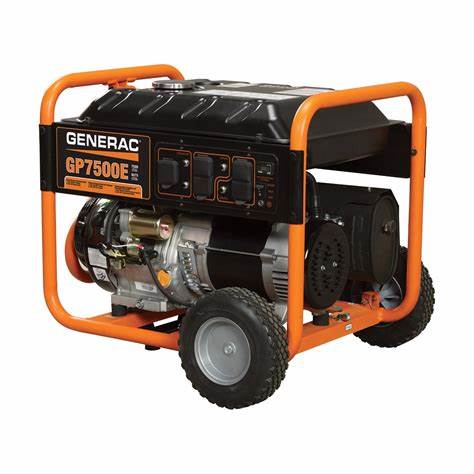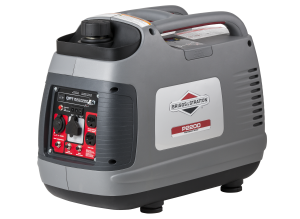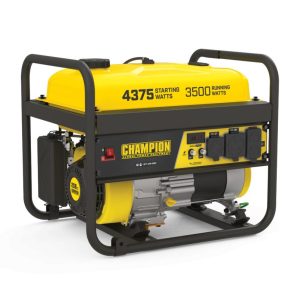6 Causes of Generator Bogging Down While Under Load (Troubleshoot)
Your generator’s performance may suffer if the air-to-fuel ratio is off or if you ask too much of it.
If the generator is overworked for its capacity, the carburetor is dirty, the fuel filter is clogged, the air filter is blocked, the throttle is jammed, or the spark arrestor is clogged, the generator will bog down and lose power.
Once the engine has cooled down, remove the spark plug wires so you may work on it. In addition to the instructions in the manual, this should be followed to prevent any major accidents.

Before diagnosing, repairing, or operating, be sure you’ve read and understood all of the safety recommendations in the equipment’s operator’s manual.
If you are unsure of how to proceed, lack the necessary expertise, or are unable to execute the repair properly, you should seek the advice of a professional.
Table of Contents
Fix a Generator That Stalls or Shuts Off Under Load
The Generator is Being Overworked for Its Capacity
The power output of generators varies. A generator can only handle so many watts of power. This is the point beyond which the generator may stall.
That’ll slow down your generator’s operation and could even harm it and whatever you have plugged into it.
Always double-check the generator’s load limit and the wattage requirements of the devices you’re operating on it before attempting to troubleshoot any rough running.
The total wattage of everything you have on at once must be less than the generator’s rated capacity.
You can usually discover the generator’s load capacity either on the generator itself or in the owner’s manual.
Also, some power supplies have a “starting wattage limit” that lets you plug in many appliances at once while turning on the power to the ones that need more juice to get the motor going.
To figure out the wattage, consider these guidelines:
- Most electrical appliances have a label that specifies their wattage for easy reference.
- More watts may be needed to kick-start certain motors. The required wattage in this scenario should be determined by using the initial wattage.
- To get a total, add up the wattage of everything that will be hooked into the generator at once.
- The sum of these watts must be lower than the maximum allowed by the generator.
Avoid utilizing the generator to power more appliances than it can sustain. Turn off the power source if the machine stalls. Take out everything that’s plugged into the outlets. Start the machine over and add components one by one.
A Generator With A Filthy Carburetor
The carburetor accumulates varnish and sticky deposits from old gas. Old gas will varnish the carburetor’s internals, coating them and blocking fuel passageways.
Lacking a sufficient quantity of fuel prevents the fuel and air mixture from igniting to produce the explosion required to start the engine. To restore functionality, a clogged carburetor requires removal for cleaning or rebuilding.
Taking pictures while you disassemble the carburetor for cleaning can help ensure that all of the little parts go back where they belong once you’re done.
Take the generator’s carburetor off. Use a carburetor cleaner to get rid of as much gunk as you can. To repair a damaged carburetor, a rebuild kit is needed to find and replace the broken pieces. The carburetor should be reinstalled after being cleaned and fixed.
If you don’t feel comfortable dismantling your carburetor and cleaning and rebuilding it yourself, you may always buy a new one. If cleaning the carburetor doesn’t fix the problem, you might want to consider replacing it.
Blockage in the generator’s fuel filter or sediment bowl
A generator’s fuel filter prevents debris from clogging the fuel system and damaging the engine.
A fuel filter can either be put at the bottom of the fuel tank or inline between the fuel lines. At the gasoline shutoff valve, you might also locate a sediment bowl.
If you use your generator like most households, you should replace the fuel filter and clean the sediment bowl (if your model includes a sediment bowl) once a year at the very least.
This upkeep is required more frequently if you utilize it more frequently.
Go to your local generator dealer or the manufacturer’s help line if you have questions about whether or not a fuel filter is necessary and the location of your fuel filter.
The Problem with a Generator With a Clogged Air Filter
The engine can be severely damaged by even a little amount of dirt or particles, but the air filter prevents this from happening.
The air filter, like the fuel filter, needs to be changed at least once a year, and more often if the generator is used often or in dusty environments.
It is not enough to simply replace the air filter; it must also be kept clean. To keep the filter in good shape and free of dirt and debris between changes, it should be checked on multiple occasions.
Filters can become so clogged with dirt that air can’t get to the engine if they aren’t cleaned and replaced periodically. The engine may stall, overheat, and sustain serious, irreparable damage as a result.
Before using, make sure the air filter has been cleaned or replaced if necessary. The operator’s manual for the generator should be consulted for cleaning instructions.
The following are cleaning instructions for two different kinds of air filters. If you don’t know how to clean your air filter, look it up in the manual.
Cleanse a generator FOAM air filter
- Take off the air filter and put it in a separate container.
- With a clean cloth, remove any leftover dust from the air filter cover and housing. Avoid having any grime enter the air intake.
- Check for wear and tear on the foam filter, and replace if necessary.
- Cleaning the filter with soapy water and rinsing it until the water runs clear will determine its condition.
- The filter must be squeezed and dried.
- After the filter has dried, treat it with fresh engine oil if it was previously oiled. Remove any extra oil by squeezing. While some foam filters may have an oil coating, others may not. If you are unsure as to whether or not you should add oil to the filter, see your user’s manual.
- Put on a new air filter.
- The air filter cover must be reattached.
Cleanse a generator PAPER air filter:
- Take off the air filter and put it in a separate container.
- With a clean cloth, remove any leftover dust from the air filter cover and housing. Avoid having any grime enter the air intake.
- Look at the disposable filter in the air conditioner. To remove dirt from the filter, tap it lightly. A new filter should be installed if the old one is too dusty, too broken, or fails to provide an adequate seal for the air intake.
- Put on a new air filter.
- The air filter cover must be reattached.
Generating a Power Outage
Inadequate airflow to the engine can also cause the generator to stall if the choke isn’t adjusted once the engine has warmed up.
One possible cause of this is failing to turn off the engine’s choke once it has warmed up. A jammed choke or malfunctioning switch/dial (depending on your model) used to start the generator are two more possible causes.
Stuck Spark Arrestor in a Generator
The spark arrestor screen is a protective cover for the generator’s muffler, preventing sparks and other high-temperature debris from escaping. This will lessen the likelihood of fires and burn casualties.
Due to the buildup of carbon on this metal screen, the generator may experience poor operation and may even shut down if the hot exhaust air is unable to escape the engine.
Wait until the muffler has cooled down before attempting to remove the spark arrestor for cleaning. Check the condition of the spark arrestor screen by removing it. If there are any holes or tears in the screen, you should get a new one.
If the screen is still functional, you can wipe it down with a commercial solvent or gently brush it with a small metal brush to get rid of soot. Return the screen to the muffler after cleaning it.







